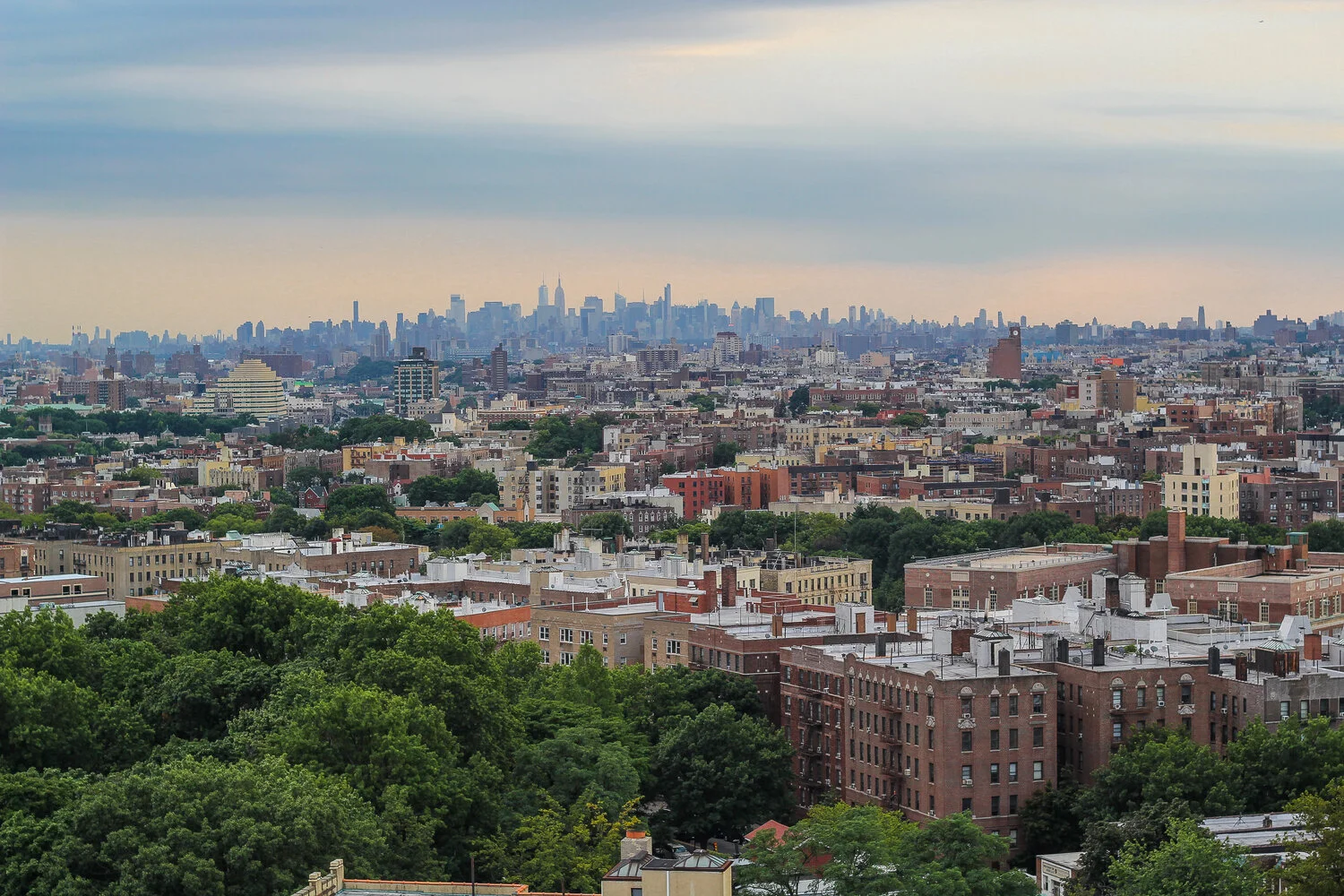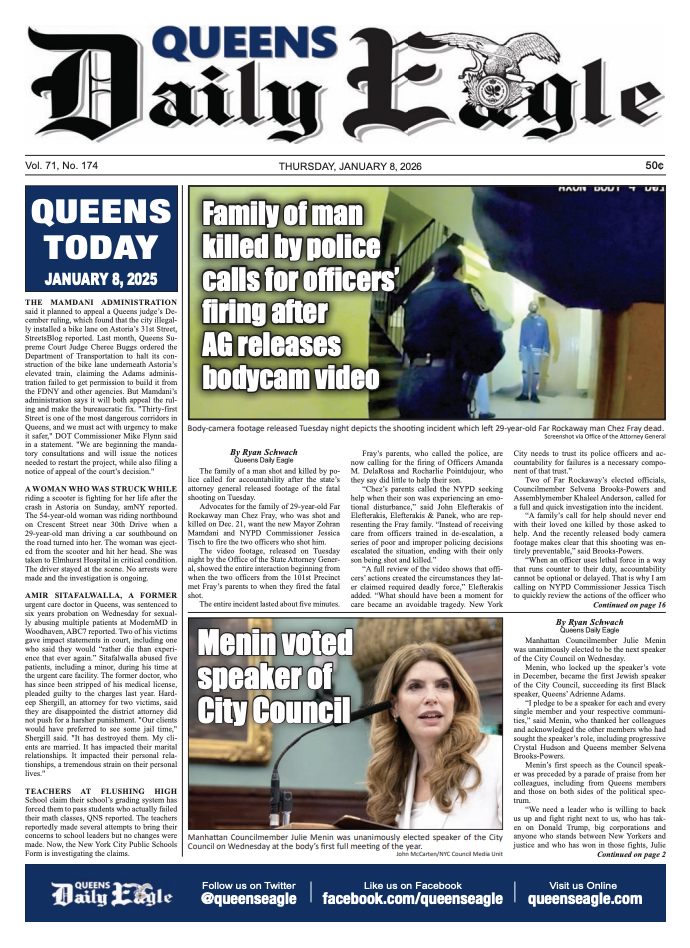NYC Housing Courts see tenfold surge in hardship forms that delay eviction proceedings
/PHOTO BY NELSON MEJIA JR./FLICKR
By David Brand
Over the past five weeks, New York City housing courts have seen a nearly 1,000-percent increase in the number of tenants submitting newly created documents that allow them to delay eviction proceedings, state data shows.
Just under 24,000 households across New York City, including 4,056 in Queens, have submitted “hardship declaration” forms that were instituted by the state in December 2020, according to the Office of Court Administration. In most cases, renters who complete the simple form indicating that they have faced financial hardship due to the COVID-19 pandemic will postpone their eviction proceedings until at least May 1.
The number of documents filed as of March 15 marks a tenfold increase since February 9, when just 2,300 New York City households had submitted the hardship forms, Law360 reported. The low number of submissions concerned advocates and lawmakers, who launched an outreach campaign to motivate tenants to file the documents.
“When the numbers were first reported as being so low, there was a real concern that we have this law to really help people facing a hardship and the information wasn’t going out,” said Legal Aid staff attorney Ellen Davidson. “The fact that we have a tenfold increase in about a month indicates we’re getting the information out to people most impacted by the pandemic and are interested in trying to save their homes.”
Davidson attributed the increase to the concerted efforts to spread the word about the forms, which included events hosted by Queens Borough President Donovan Richards and other local leaders. Many judges have also begun asking tenants if they want to submit the simple document when they come to court, she said.
The hardship documents remain unpopular among landlord groups, who have criticized the state for not requiring tenants to prove the economic hardship they claim.
The legislation “extends the eviction moratorium for residential tenants based on the submission of a simple declaration of financial hardship without proving such hardship caused by COVID-related job loss or income reduction,” said Rent Stabilization Association President Joseph Strasburg, whose organization represents 25,000 landlords across New York City.
OCA spokesperson Lucian Chalfen also pointed out that, while there has been an exponential increase in the number of people who have returned the form since mid-February, they make up only a fraction of the renters who received the document. The court system sent out about 465,000 hardship forms to New York City residents, he said.
Tenant advocates hung banners from the No. 7 train tracks calling on the state to cancel rent during the COVID-19 pandemic. That did not come to pass, but only one tenant in Queens was legally evicted in the past year. AP Photo/Bebeto Matthews
The legislation creating the hardship documents was the latest action by state lawmakers to delay evictions as New York contends with the COVID-19 pandemic and related economic crisis.
Though the state has not passed meaningful legislation enabling tenants and landlords to recover an estimated $3.2 billion in back rent, the piecemeal eviction protections have managed to keep people in their homes, Davidson said.
“By and large the measures were able to stop legal evictions,” she said. “These laws saved the lives of many New Yorkers.”
March 16 represents one year since the first eviction moratorium took effect, after Chief Administrative Judge Lawrence Marks issued a memo halting most housing court proceedings and evictions. Gov. Andrew Cuomo proceeded to issue a series of stopgap orders that ceased evictions in most cases before state lawmakers began to pass legislation protecting New York renters whose housing court cases had not yet been adjudicated.
The measures have had a profound impact on housing court and tenants’ ability to remain in their homes over the past year.
During the first 16 days of March 2020, for example, marshals executed 124 residential and commercial evictions in Queens, according to reports compiled by the Department of Investigation, which oversees marshals
Over the next 12 months, they completed just three in a borough of 2.3 million people.
Across New York City, there have been 23 evictions in the past year, including nine residential tenants during a window that allowed marshals to eject a limited number of tenants whose cases were settled prior to the pandemic.
In contrast, there were nearly 1,600 evictions in January 2020 alone, including 331 in Queens.
A September 2020 analysis by National Council of State Housing Agencies found that up to 1.2 million tenants across the state are at risk of eviction as a result of the pandemic.
The exact number of tenants now facing eviction in New York City is hard to gauge with proceedings suspended, said Chalfen, the OCA spokesperson
He said there were 130,000 pending eviction cases in New York City before the state imposed coronavirus restrictions, but many have likely been resolved out of court. OCA estimates that there were about 50,000 “actively litigated eviction cases” making their way through housing courts a year ago.
Another 42,917 eviction cases have been filed in Housing Courts citywide since June 22, 2020, when the court system lifted a freeze on proceedings.
“Until we resume appearance calendars and we get updates from the parties – it is impossible to tell which cases were resolved privately and which weren’t,” Chalfen said.
But regardless of the exact number, landlords, tenants and their advocates say the volume of stalled cases has left New York facing down a wave of evictions. They have called on the state to take additional action to cover back rent and head off the pending crisis.
“At this juncture, we must use this time to address and prevent the eviction and foreclosure catastrophe looming just over the horizon,” wrote the New York City Bar Association’s Housing Court Committee in a report last month.
The committee urged the state to provide emergency cash assistance for New Yorkers in rent arrears and expand eligibility for housing vouchers.
New and existing laws have not prevented illegal evictions or stopped property owners, subletters and tenants from kicking people out of unlawful dwellings or from homes where their names do not appear on the lease. Single adult homelessness has risen over the past year, despite the many measures.
One Maspeth property owner, for example, locked a tenant out of her basement apartment in January, spurring a campaign by local activists who picketed outside the landlord’s home.
“We’re upping the ante and letting them know we’re watching because what they’re doing is illegal,” said Ridgewood Tenants Union organizer Raquel Namuche at the time.
The landlord eventually settled with the tenant, who agreed to a buyout.
Few renters can raise that level of awareness and activism, however, fueling the need for more outreach and resources, advocates say. Over the past year, New York City has expanded a right to counsel law to enable low- and middle-income tenants to access a housing attorney and the state has introduced a modest rent relief program.
Tenant advocates are now calling on the state to pass a bill known as the COVID-19 Emergency Rental Assistance Program that will provide rental and utility payment assistance to many New Yorkers on the brink of eviction and homelessness. The fund will allow thousands of tenants to stay in their homes and pay the rent they owe, benefiting renters and landlords alike, bill sponsors say.
Relief should also soon come via the federal government, which has allocated $2.8 billion to New York state to fund rent relief programs.
“We’re right at the moment when money will come through and make landlords whole,” Davidson said. “We have to have everyone’s focus turn to landlords and tenants applying for this money and getting this money into their pockets.”





